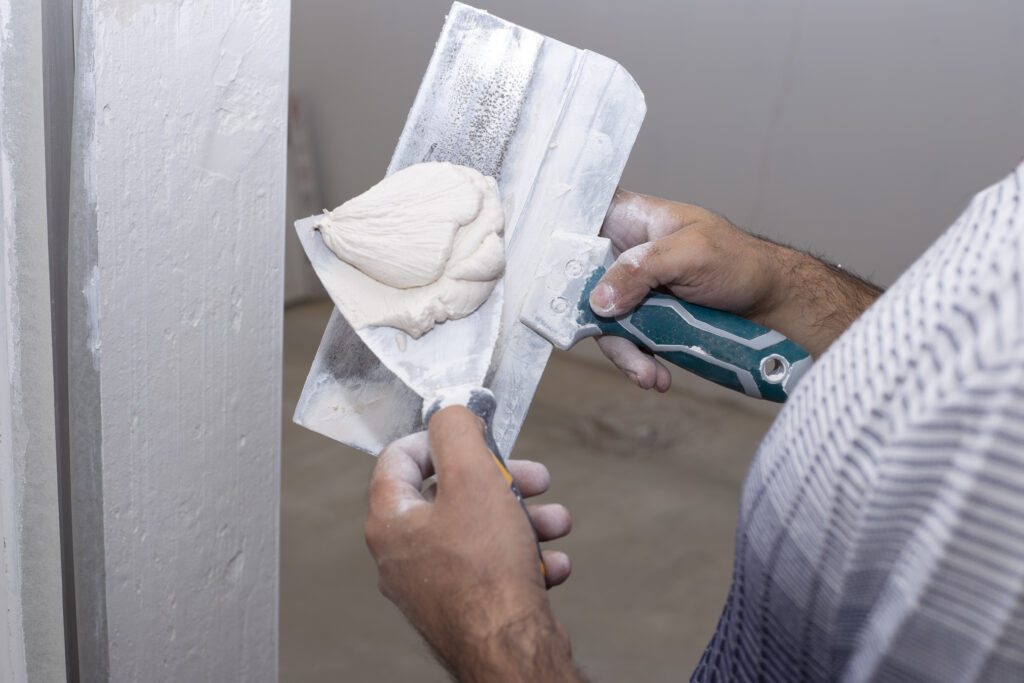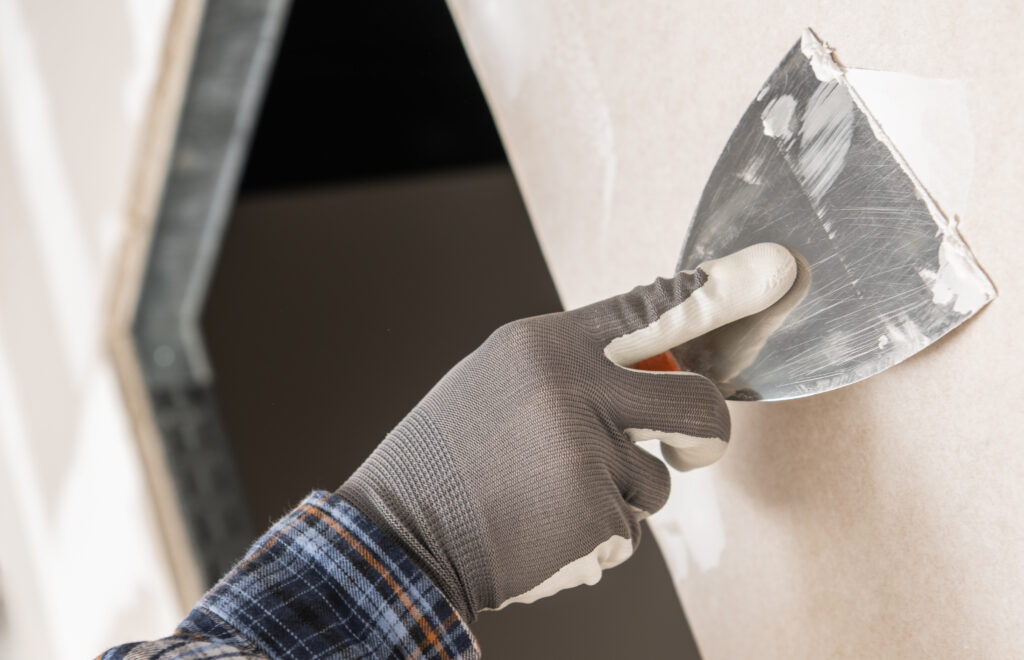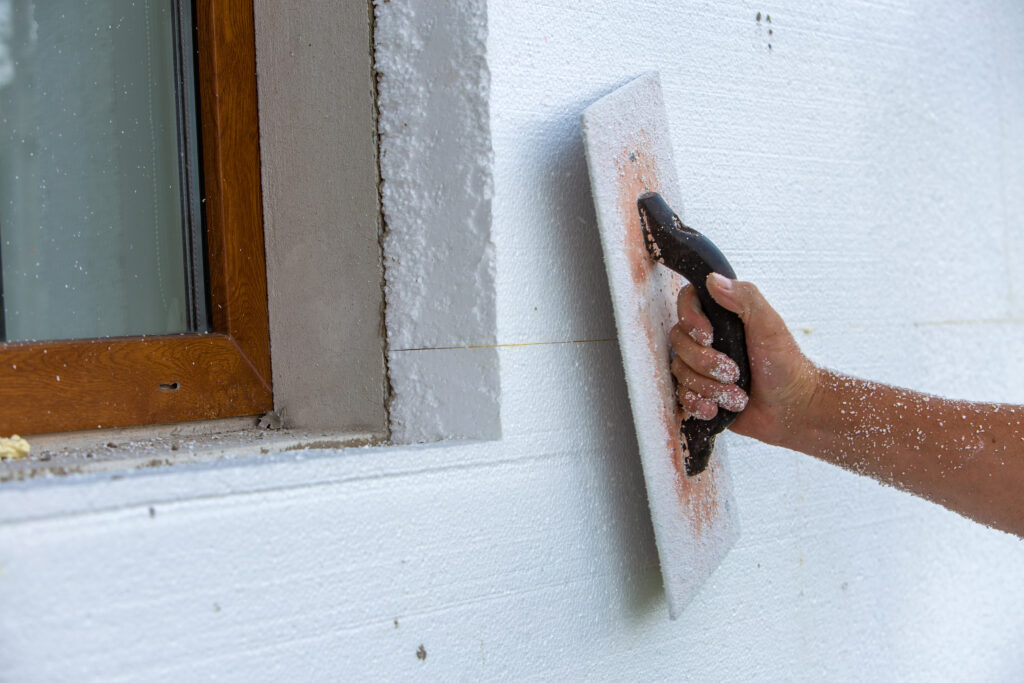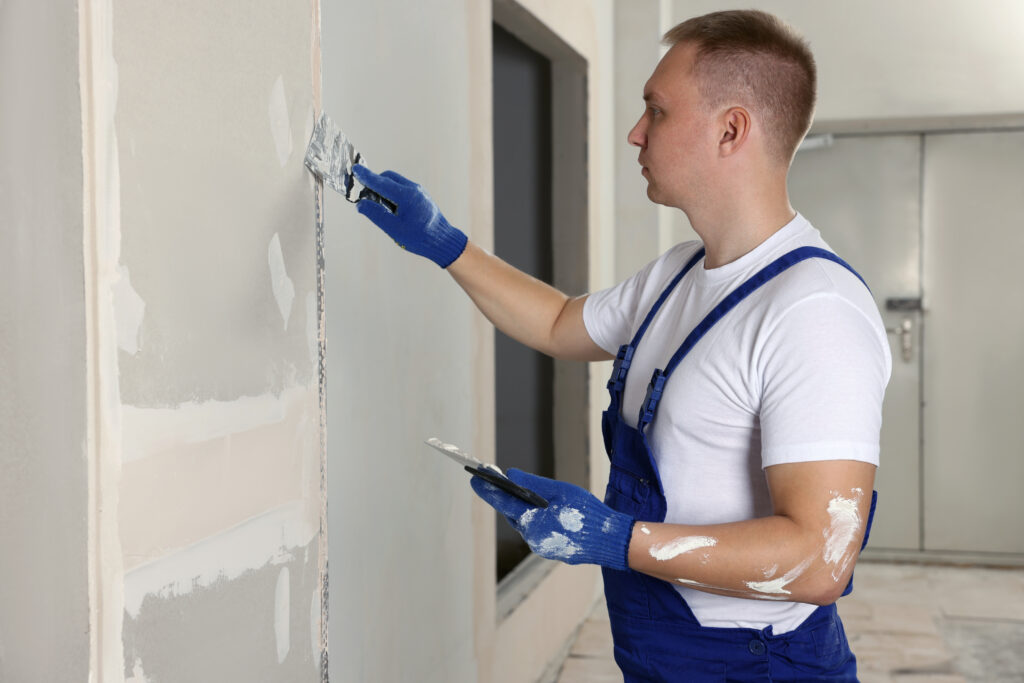At Clean Fanatics, we’re always on the lookout for ways to enhance the services we offer to our valued clients. We’re excited to announce our latest addition. With our reputation for excellence in cleaning and maintenance services, we’re expanding our offerings to transform your spaces through top-notch Civil works. Whether you’re dealing with damaged walls, ceilings, or other plastered surfaces, our team of skilled professionals is here to provide top-quality replastering services. Book your inspection today for just Rs. 199, which will be reimbursed when you book our replastering services!
What’s included in RenoPro Replastering?
Re-plastering is the process of applying a new layer of plaster to an existing wall or ceiling surface. This is typically done to repair and refresh the appearance of the surface.
Whether you’re dealing with cracked, damaged, or outdated plaster surfaces, the replastering process can help refresh the look and functionality of your interior spaces. Below is a detailed guide on the replastering process:
- Examine the existing plaster to identify any cracks, holes, or areas that need repair.
- Remove any loose or damaged plaster by scraping or chiseling it away.
- Clean the surface using wire brush to remove any dust, dirt, grease, or loose debris. A clean surface ensures better adhesion for the new plaster.
- Mix the plaster material according to specifications, normally for wall 1:6 and for ceiling 1:4 cement & sand ratio.
- Use trowels and other tools to achieve the desired finish on the surface.
- Allow the finish coat to cure or dry completely. This may take around 7 days, depending on the plaster type and environmental conditions.
- Painting: Painting is done after 10–15 days, depending on the weather and moisture conditions of the plastered surface.
When to Consider Replastering?
Visible Damage
Cracks, holes, or crumbling plaster signal the need for replastering. These issues affect both structure and appearance.
Water Damage
Peeling or bubbling plaster often points to water damage. Replastering fixes cosmetic and underlying moisture problems.
Cracking and Settling
Extensive cracks from settling compromise wall stability. Replastering ensures structural integrity.
Outdated Aesthetics
Old plaster textures or finishes can be updated with replastering, giving your space a modern look.
Mold and Mildew Growth
Persistent mold or mildew may require replastering to address moisture issues and restore a clean surface.
Peeling or Loose Plaster
Loose plaster can be dangerous and unsightly. Replastering secures the surface and improves stability.
Crumbing and Deterioration
Crumbled plaster needs replacement, especially in load-bearing areas, to ensure durability.
Structural Concerns
Replastering can help reinforce walls or ceilings that have shifted, preventing further issues.
Improved Insulation
Replastering with insulating materials enhances energy efficiency and comfort in your home.
Why Consider Replastering?
Restoring Damaged Surfaces
Replastering repairs cracks, holes, and imperfections, bringing back smooth, flawless walls and ceilings.
Enhancing Aesthetic Appeal
Update your space with various textures, finishes, and colors to match your style.
Repairing Water Damage & Preventing Issues
Fix water-damaged surfaces and prevent future deterioration with timely replastering.
Addressing Structural Issues
Replastering reinforces walls and ceilings weakened by loose or detached plaster.
Personalization and Modernization
Update outdated finishes and colors to give your space a modern look.
Health and Hygiene Benefits
Create a clean, smooth surface that eliminates allergens and mold for better air quality.
Increasing Property Value
Fresh plaster enhances your home’s appeal, boosting resale value.
Boosting Energy Efficiency
Improve insulation, regulate temperatures, and lower heating and cooling costs.
Improving Durability
New plaster layers strengthen surfaces, especially in high-traffic areas.



